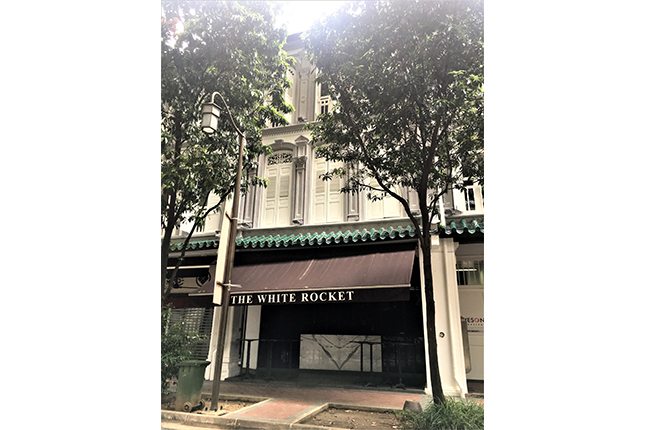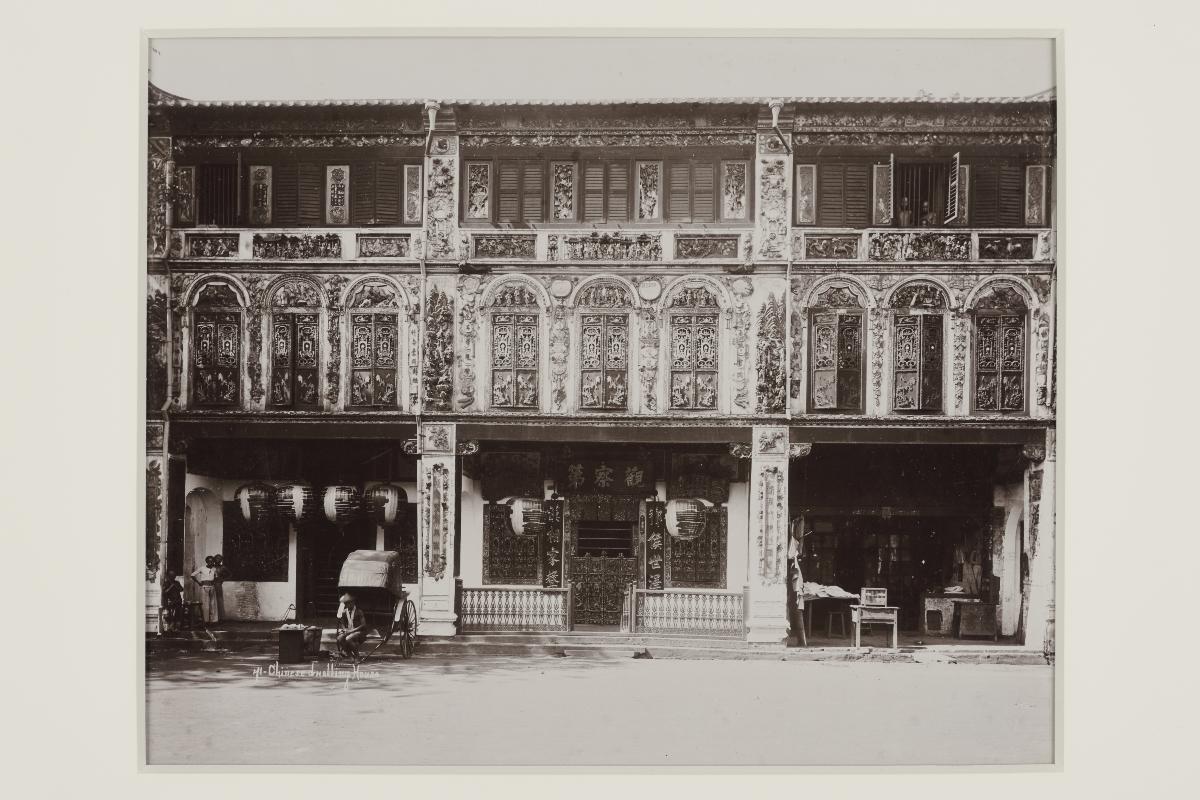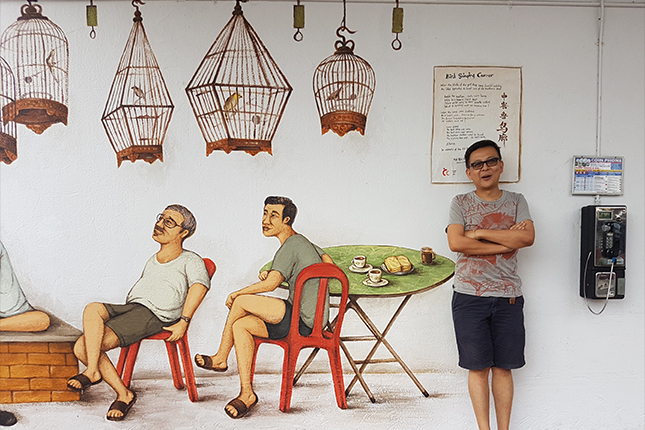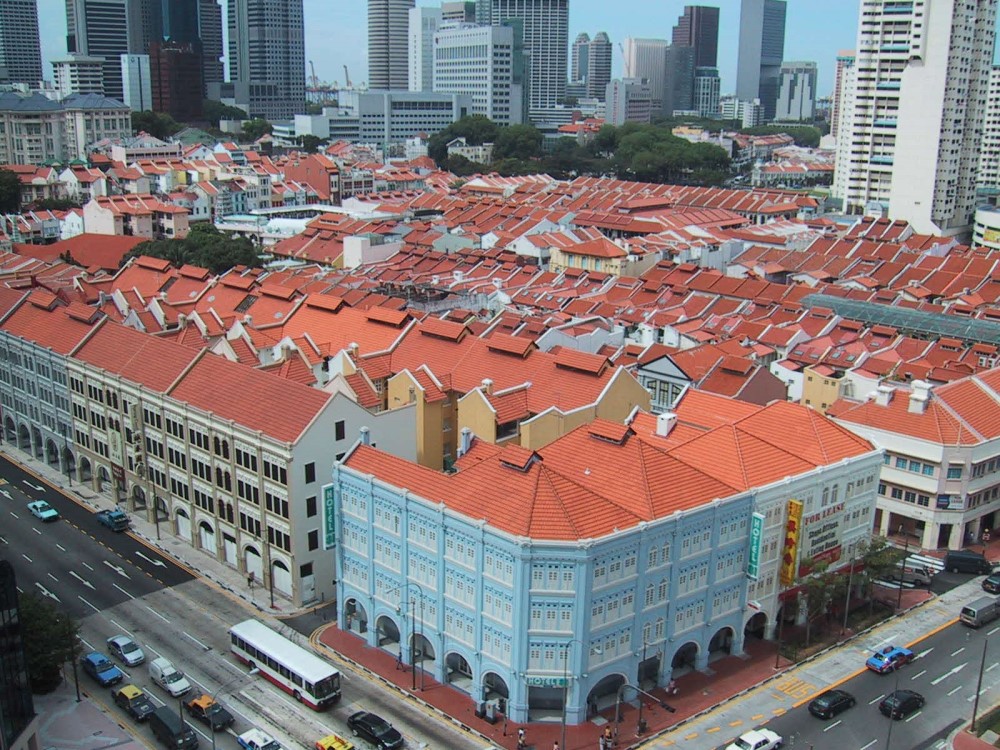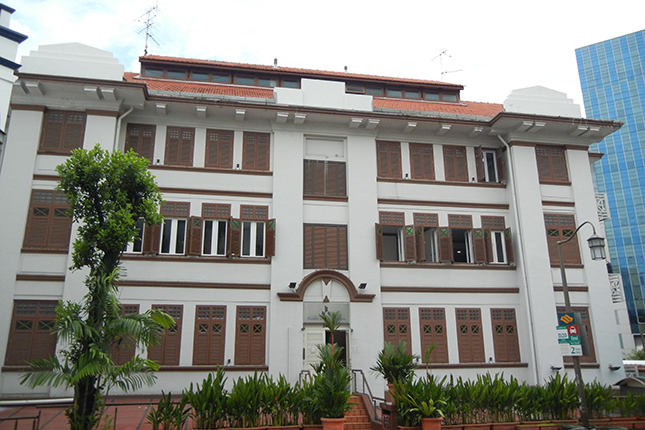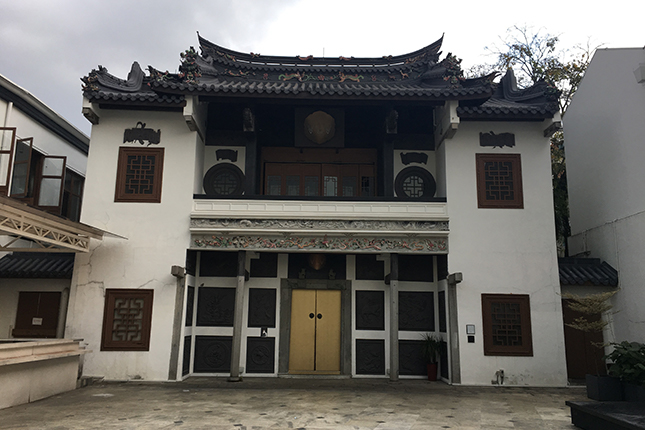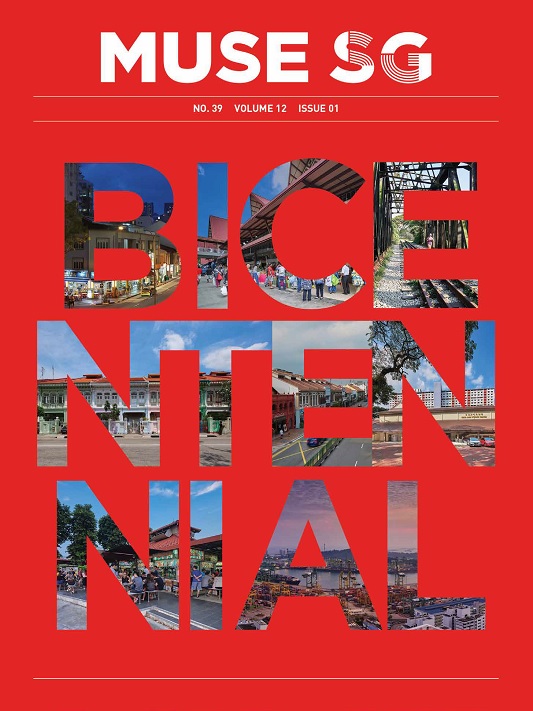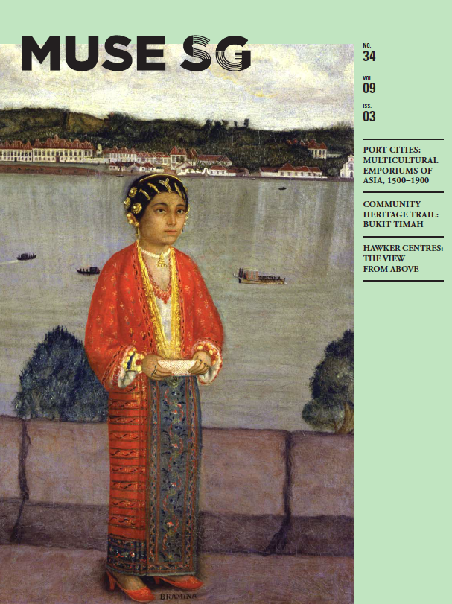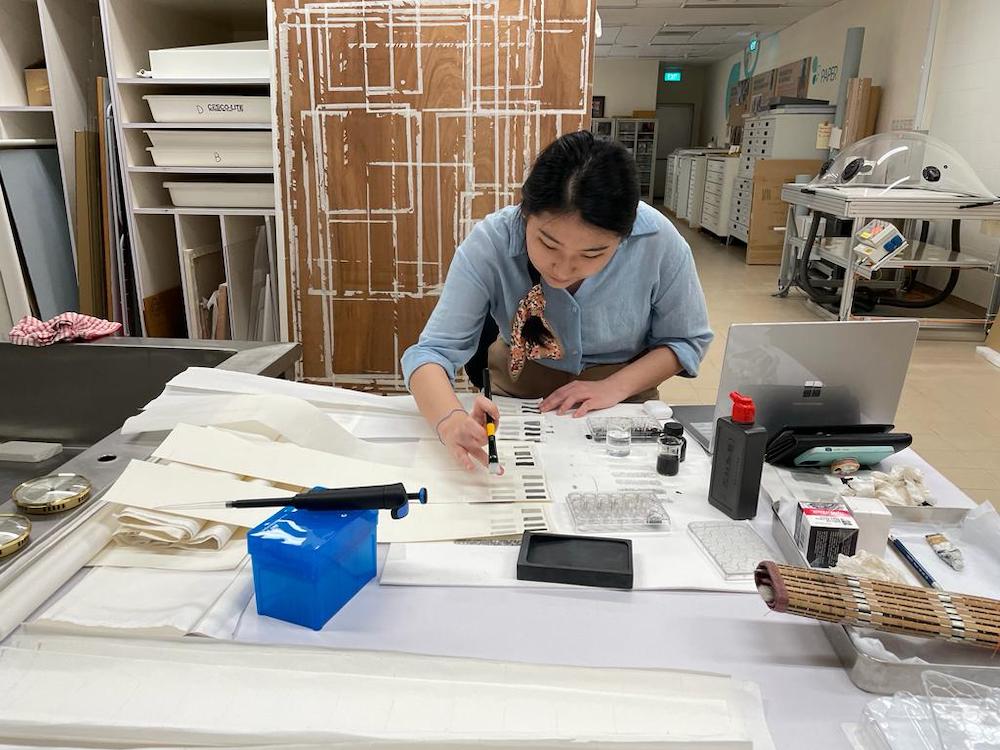Stanley Street is an interesting mix of old and new. Lofty skyscrapers―mostly headquarters of international banks―cast long shadows, obscuring the row of shophouses situated across the street.
Bustling with commercial activity, it is difficult to believe that this area was once a part of the picturesque Telok Ayer Bay. From 1879 to 1885, the British colonial government carried out land reclamation works using the soil of nearby hills as raw material.
The reclaimed land between Stanley Street and Telok Ayer Street was then auctioned off in plots and purchased for the construction of shophouses.
Along Stanley Street, the neat row of three-storey shophouses, partially hidden behind a lane of tall trees, project the simple, elegant style of early 20th century Singaporean architecture. The structure has been carefully conserved to retain its original façade and architectural features.
Few are aware that unit no. 5 on Stanley Street has an interesting past. When it was first constructed, the building acted as the headquarters of Lee Cheng Yan and Co., a shipping, financing and property firm founded by its namesake in 1858.
Lee was a Straits-born merchant and philanthropist. In particular, he contributed to the Chinese schools of early Singapore―founding, endowing and serving on the boards and committees of several illustrious schools.
After Lee’s retirement, No. 5 Stanley Street later became the residence of his eldest son, Lee Choon Guan. The shophouse unit was also notable as the site of the Blood Donation Association headquarters during the 1960s.
At the time of writing, the ground floor operates as a café by day and bar by night while the upper floors are offices.
This is a conserved building(s) by the Urban Redevelopment Authority (URA), please visit URA’s Conservation Portal for more details.
Buildings and sites featured on Roots.SG are part of our efforts to raise awareness of our heritage; a listing on Roots.SG does not imply any form of preservation or conservation status, unless it is mentioned in the article. The information in this article is valid as of October 2019 and is not intended to be an exhaustive history of the site/building.




